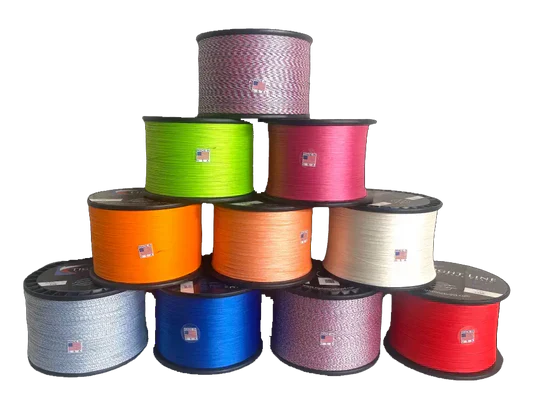Collection: Fishing Line
🎣 Fishing Line: The Backbone of Your Setup
Fishing line is the critical link between you and the fish—transmitting movement, tension, and energy from your rod to your lure or bait. It comes in various types, each with unique properties suited to different fishing styles and environments.
🧵 Key Characteristics of Fishing Line
-
Breaking Strength: Measured in pounds (lb test), it indicates how much force the line can withstand before snapping.
-
Stretch: Some lines stretch to absorb shock, which helps when fighting fish but reduces sensitivity.
-
Memory: Lines with high memory tend to coil, which can affect casting and presentation.
-
Abrasion Resistance: Important when fishing near rocks, logs, or other rough surfaces.
-
Visibility: Clear lines are less likely to spook fish; colored lines help anglers track movement.
-
Buoyancy: Floating lines are ideal for topwater fishing; sinking lines are better for deep-water precision.
🧪 Types of Fishing Line
| Type | Material | Pros | Cons | Best For |
|---|---|---|---|---|
| Monofilament | Nylon | Cheap, easy to handle, good knot strength | High stretch, absorbs water, memory issues | Beginners, topwater, all-purpose |
| Fluorocarbon | Polyvinylidene fluoride | Low visibility, abrasion-resistant | Stiffer, more expensive | Clear water, finesse techniques |
| Braided | Polyethylene fibers | Strong, thin diameter, low stretch | Highly visible, poor knot grip | Heavy cover, deep water, trolling |
Each type has its own strengths depending on your target species, water clarity, and fishing technique.

-
Slime Line
Regular price From $14.99 USDRegular priceUnit price / per -
Vicious, Mono Leader 60 Yard Spool
Regular price From $6.99 USDRegular priceUnit price / per -
Mad Katz, Kat Braid 328 Yard Spool
Regular price $24.99 USDRegular priceUnit price / per -
K9 Fishing Katline Leader Line
Regular price $14.99 USDRegular priceUnit price / per -
Vicious Catfish Line
Regular price $9.49 USDRegular priceUnit price / per -
Tight Line Braid 8 Strand 300 Yards
Regular price $38.99 USDRegular priceUnit price / per -
Tight Line Braid 8 Strand 150 Yards
Regular price $19.99 USDRegular priceUnit price / per -
Mad Katz Structure Kat Mono
Regular price From $22.99 USDRegular priceUnit price / per -
Mad Katz Structure Kat Leader
Regular price $13.99 USDRegular priceUnit price / per -
K9 Fishing Katline Braid
Regular price From $27.99 USDRegular priceUnit price / per -
Draggin Master Black Armor Leader Line
Regular price $13.99 USDRegular priceUnit price / per -
Slime Line, Heavy Cover Leader Line
Regular price $14.99 USDRegular priceUnit price / per

















